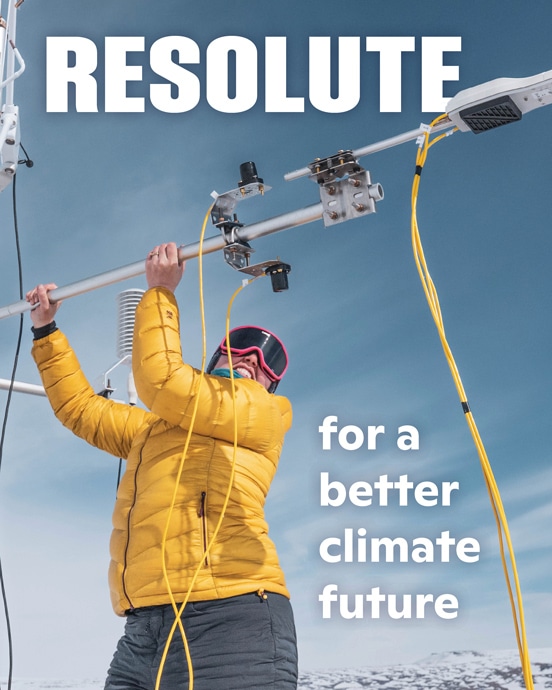When it comes to reversing climate change, trees are a big deal. Globally, forests absorb nearly 16 billion metric tonnes of carbon dioxide per year, and currently hold 861 gigatonnes of carbon in their branches, leaves, roots, and soils. This makes them a valuable global carbon sink, and makes preserving and maintaining healthy forests a vital strategy in combating climate change.
But not every forest absorbs and stores carbon in the same way, and the threats facing each are complex. A nuanced understanding of how carbon moves through forest ecosystems helps us build better strategies to protect them. Here’s how the world’s different forests help keep the world cool, and how we can help keep them standing.
Tropical forest carbon
Tropical rainforests are models of forest productivity. Trees use carbon in the process of photosynthesis, integrating it into their trunks, branches, leaves, and roots. When part or all of a tree dies and falls to the ground, it is consumed by microorganisms and carbon is released in the process of decay. In the heat and humidity of the tropics, vegetation grows so rapidly that decaying organic matter is almost immediately re-incorporated into new growth. Nearly all the carbon stored in tropical forests exists within the plants growing aboveground.
Studies estimate that tropical forests alone are responsible for holding back more than 1 degree C of atmospheric warming. 75% of that is due simply to the amount of carbon they store. The other 25% comes from the cooling effects of shading, pumping water into the atmosphere and creating clouds, and disrupting airflow.
In many tropical forest regions, there is a tension between forests and agricultural expansion. In the Amazon rainforest, land grabbing for commodity uses like cattle ranching or soy farming has advanced deforestation. Increasing protected forest areas and strengthening the rights of Indigenous communities to manage their own territories has proven effective at reducing deforestation and its associated emissions in Brazil. “Undesignated lands” have the highest levels of land grabbing and deforestation.
Fire has also become a growing threat to the Amazon in recent years, used as a tool to clear land by people illegally deforesting. When rainforests have been fragmented and degraded, their edges become drier and more susceptible to out-of-control burning, which weakens the forest even further. Enforcing and strengthening existing anti-deforestation laws are crucial to reduce carbon losses.
In Africa’s Congo rainforest, clearing is usually for small subsistence farms which, in aggregate, have a large effect on forest loss and degradation. Mobilizing finance to scale up agricultural intensification efforts and rural enterprise within communities, while implementing protection measures, can help decrease the rate of forest destruction. Forests and other intact natural landscapes such as wetlands and peatlands could be the focus of climate finance mechanisms that encourage sustainable landscape management initiatives.
Temperate forest carbon
Much of the forest carbon in the temperate zone is stored in the trees as well— particularly in areas where high rainfall supports the growth of dense forests that are resilient against disturbances like drought or disease. The temperate rainforests of the Northwestern United States, Chile, Australia, and New Zealand contain some of the largest and oldest trees in the world.
Two thirds of the total carbon sink in temperate forests can be attributed to the annual increase in “live biomass”, or the yearly growth of living trees within the forest. This makes the protection of mature and old-growth temperate forests paramount, since older forests add more carbon per year than younger ones and have much larger carbon stocks. Timber harvesting represents one of the most significant risks to the carbon stocks in temperate forests, particularly in the United States where 76% of mature and old growth forests go unprotected from logging. Fire and insects are also significant threats to temperate forests particularly in areas of low rainfall or periodic drought.
Maintaining the temperate forest sink means reducing the area of logging, by both removing the incentive to manage public forests for economic uses and by providing private forest owners with incentives to protect their land. Low-impact harvesting practices and better recycling of wood products can also help bring down carbon losses from temperate forests. In areas threatened by increasingly severe wildfires, reducing fuel loads especially near settlements can help protect lives and property.
Boreal forest carbon
In boreal forests, the real wealth of carbon is below the ground. In colder climates, the processes of decay that result in emissions tend to lag behind the process of photosynthesis which locks away carbon in organic matter. Over millennia, that imbalance has slowly built up a massive carbon pool in boreal soils. Decay is even further slowed in areas of permafrost, where the ground stays frozen nearly year round. It estimated that 80 to 90% of all carbon in boreal forests is stored belowground. The aboveground forest helps to protect belowground carbon from warming, thaw, decay, and erosion.
Wildfire— although a natural element in boreal forests— represents one of the greatest threats to boreal forest carbon. With increased temperatures, rising more than twice as fast in boreal forests compared to lower latitudes, and more frequent and long-lasting droughts, boreal forests are now experiencing more frequent and intense wildfires. The hotter and more often a stand of boreal forest catches fire, the deeper into the soil carbon pool the fire will burn, sending centuries-old carbon up in smoke in an instant. Logging of high-carbon primary forests is also a big issue in the boreal.
The number one protection for boreal forest carbon is reducing fossil fuel emissions. Only reversing climate change will bring boreal fires back to the historical levels these forests evolved with. In the meantime, active fire management in boreal forests offers a cost effective strategy to reduce emissions— studies found it could cost less than 13 dollars per ton of carbon dioxide emissions avoided. Strategies for fire management included both putting out fires that threaten large emissions, and controlled and cultural burning outside of the fire season to reduce the flammability of the landscape.
Science on the Fly harnesses fly fishing community to protect rivers
How scientists and anglers are helping to tell the world’s climate change story.
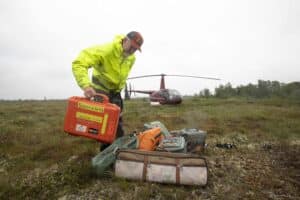
Fly fishers are full of good ideas. Just ask them. They don’t always amount to anything, but, in the confines of a fly shop or between the gunnels of a drift boat, the ideas pour forth.
But one good idea, launched during a southwest Colorado environmental symposium a few years back, has taken root. And this past summer, it sprouted some important international branches that will hopefully help climate scientists better understand how the world’s existential climate crisis is impacting our rivers.
At the conference in Telluride in 2019, Dr. Max Holmes, president and CEO of the Woodwell Climate Research Center (WCRC) in Falmouth, Massachusetts, met John Land Le Coq, the founder and CEO of Fishpond, where the two discussed the idea of monitoring rivers over time for their chemical composition, with the intent of determining how climate change affects that composition. But, they discussed, the monitoring needed to be consistent and lasting in order for Holmes and his team at WCRC to glean truly meaningful data.
Continue reading on Fly Fisherman.
Broken record: March is 10th straight month to be hottest on record, scientists say
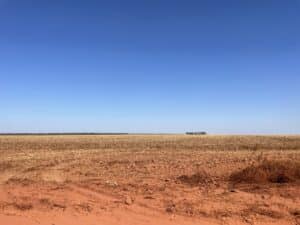
For the 10th consecutive month, Earth in March set a new monthly record for global heat — with both air temperatures and the world’s oceans hitting an all-time high for the month, the European Union climate agency Copernicus said.
March 2024 averaged 14.14 degrees Celsius (57.9 degrees Fahrenheit), exceeding the previous record from 2016 by a tenth of a degree, according to Copernicus data. And it was 1.68 degrees C (3 degrees F) warmer than in the late 1800s, the base used for temperatures before the burning of fossil fuels began growing rapidly.
Since last June, the globe has broken heat records each month, with marine heat waves across large areas of the globe’s oceans contributing.
Read more on Associated Press News.
Record wildfires hit Venezuela during climate-driven Amazon drought
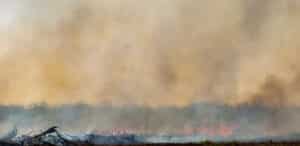
Venezuela is battling a record number of wildfires, according to data released on Monday, as a climate change-driven drought plagues the Amazon rainforest region.
Satellites registered more than 30,200 fire points in Venezuela from January to March, the highest level for that period since records started in 1999, according to Brazil’s Inpe research agency, which monitors all of South America.
That includes fires in the Amazon, as well as the country’s other forests and grasslands.
Senators Warren and Markey announce funding for regional projects
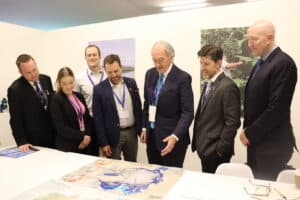
Senators Ed Markey and Elizabeth Warren recently announced $4.4 million in federal funding for community health and education projects, building on previous funding announcements for a total of $8.1 million for projects on the Cape & Islands.
The new projects to receive funds will include aid for Cape Abilities as it replaces its transportation fleet with fully electric vans; operating room, acute care, and radiation equipment at Martha’s Vineyard Hospital; free health services for residents with Alzheimer’s and dementia patients; and artistic learning opportunities at the Fine Arts Work Center in Provincetown.
Study says since 1979 climate change has made heat waves last longer, spike hotter, hurt more people
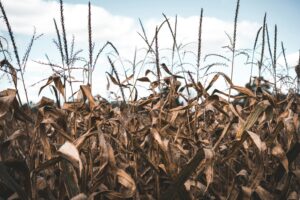
Climate change is making giant heat waves crawl slower across the globe and they are baking more people for a longer time with higher temperatures over larger areas, a new study finds.
Since 1979, global heat waves are moving 20% more slowly — meaning more people stay hot longer — and they are happening 67% more often, according to a study in Friday’s Science Advances. The study found the highest temperatures in the heat waves are warmer than 40 years ago and the area under a heat dome is larger.
Continue reading on Associated Press News.
Leading ecologists call for strengthening nature-based climate solutions at the Federal level
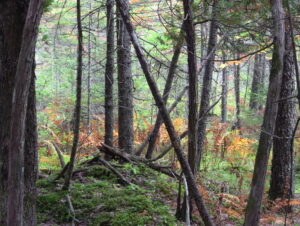
Nature-based climate solutions (NbCS) have courted both enthusiastic support and considerable controversy (1–8). Defined as deliberate human actions that manipulate ecosystems to improve the planet’s greenhouse gas balance, NbCS provoke disagreement, in large part because their implementation has so far outpaced a science-based understanding of their long-term climate mitigation potential.
Fund for Climate Solutions awards five new grants
From the Arctic to the Tropics, the 2024 winter cohort of FCS projects fills information gaps to produce actionable insights
Quantifying large greenhouse gas emissions from a retrogressive thaw slump in Alaska
Lead: Jennifer Watts
Collaborators: Kyle Arndt, Patrick Murphy
Retrogressive thaw slumps (RTS) are extreme permafrost thaw landscape features, which occur when a section of ice-rich permafrost becomes warm enough to cause the ground ice to melt and soils to collapse. Once they start, RTS continue to expand and destroy nearby permafrost for months to years. Many RTS have been identified, but because they are often in extremely remote arctic locations, very little is known about the potentially substantial carbon emissions from RTS in the form of carbon dioxide and methane. This study will provide the first continuous measurements of carbon emissions from a RTS, collected over at least a year via an eddy covariance tower. The research is also supported by an equipment loan provided through the U.S. Department of Energy AmeriFlux Rapid Response program, which recognized this project as a valuable opportunity to advance science. The data collected will also serve as a “proof of concept” for a subsequent $1.3M proposal to the National Science Foundation for continued research at the site.
Assessing the impacts of ecosystem disturbance on carbon emissions from Arctic and Amazon ponds
Lead: Elchin Jafarov
Collaborators: Zoë Dietrich, Andrew Mullen, Jackie Hung, Marcia Macedo, Kathleen Savage
Freshwater ecosystems are significant sources of the greenhouse gases that persist in the atmosphere and contribute to warming. However, research is lacking an understanding of how disturbances like wildfire and agriculture can change these emissions. This project will address these information gaps by collecting measurements of carbon emissions from ponds, using autonomous floating chambers developed with funding from a previous FCS grant. With this new high-resolution data, the team will unlock the ability to predict year-round greenhouse gas emissions from ponds in the Arctic and the Amazon. Floating chambers will be deployed in ponds in Alaska affected by wildfires, and in agricultural reservoirs in the Amazon-Cerrado frontier. In both locations, the ability to take more frequent measurements of carbon emissions will help researchers improve models and better assess the ponds’ impacts on regional carbon budgets.
The Polaris Project: Data synthesis from almost two decades of research and student participation
Lead: Nigel Golden
Collaborator: Sue Natali
Established in 2008, the Polaris Project has earned global recognition for its leadership in Arctic research, education, and outreach. Through the commitment to providing students with hands-on experience, Polaris has enabled numerous publications and presentations. Polaris is approaching a critical juncture in the next funding cycle, and this project will complete the first-ever comprehensive synthesis of Polaris Project research to help sustain Woodwell Climate’s sole undergraduate research program. By consolidating past research and educational achievements, the team will create a data synthesis paper to be submitted to a peer-reviewed, open-access scientific research journal, as well as a retrospective analysis of undergraduates’ research experiences with Polaris to be submitted to an education research journal. The team will also launch an online communications piece that documents past Polaris participants’ field experiences and unique journeys with a variety of narrative and artistic communications styles and elements.
Determining the climate sensitivity of coastal rivers to guide ecosystem restoration across SE Massachusetts
Lead: Abra Atwood
Collaborators: Marcia Macedo, Chris Neill, Linda Deegan, Scott Zolkos
Coastal rivers, like those that flow into Massachusetts’ Buzzards Bay and Vineyard Sound, are fragile environments that serve critical ecological functions for native fish, downstream estuaries, and coastal wetlands. Different rivers are uniquely sensitive to changes in air temperature based on a variety of characteristics, such as their water source or shade. However, land use changes, including housing development and cranberry bogs, have affected key river characteristics and stream temperatures. This project will investigate MA coastal rivers’ sensitivity to changing air temperature, as well as how that sensitivity is affected by both connection to groundwater and the creation or restoration of cranberry bogs. The temperature sensors and geochemical analyses used in this research may be scalable beyond these rivers and yield insights to inform research approaches relevant to rivers around the world.
A drought early warning system for the DRC: Developing a seasonal forecast based on novel machine learning approaches
Lead: Carlos Dobler-Morales
Collaborators: Christopher Schwalm, Glenn Bush
Seasonal weather forecasts hold immense potential to improve risk management from agricultural failure, water stress, and extreme events. However, significant advances in technical forecasting capabilities remain largely unavailable to communities without the resources to develop or customize them for their region. In 2023, Woodwell Climate Just Access co-produced a national climate risk assessment with the Democratic Republic of Congo’s Ministry of Environment and Sustainable Development. That report identified drought as a major climate threat to the DRC—one which stands to affect almost the entire country. In response, this project will develop a seasonal drought forecasting model tailored to the DRC using cutting-edge machine-learning methods. The forecast will be able to deliver precise rainfall anomaly predictions up to six months in advance for the whole country, and serve as an early warning system to help local people and decision-makers anticipate the impacts of escalating drought risk.
Learn more about the Fund for Climate Solutions.




